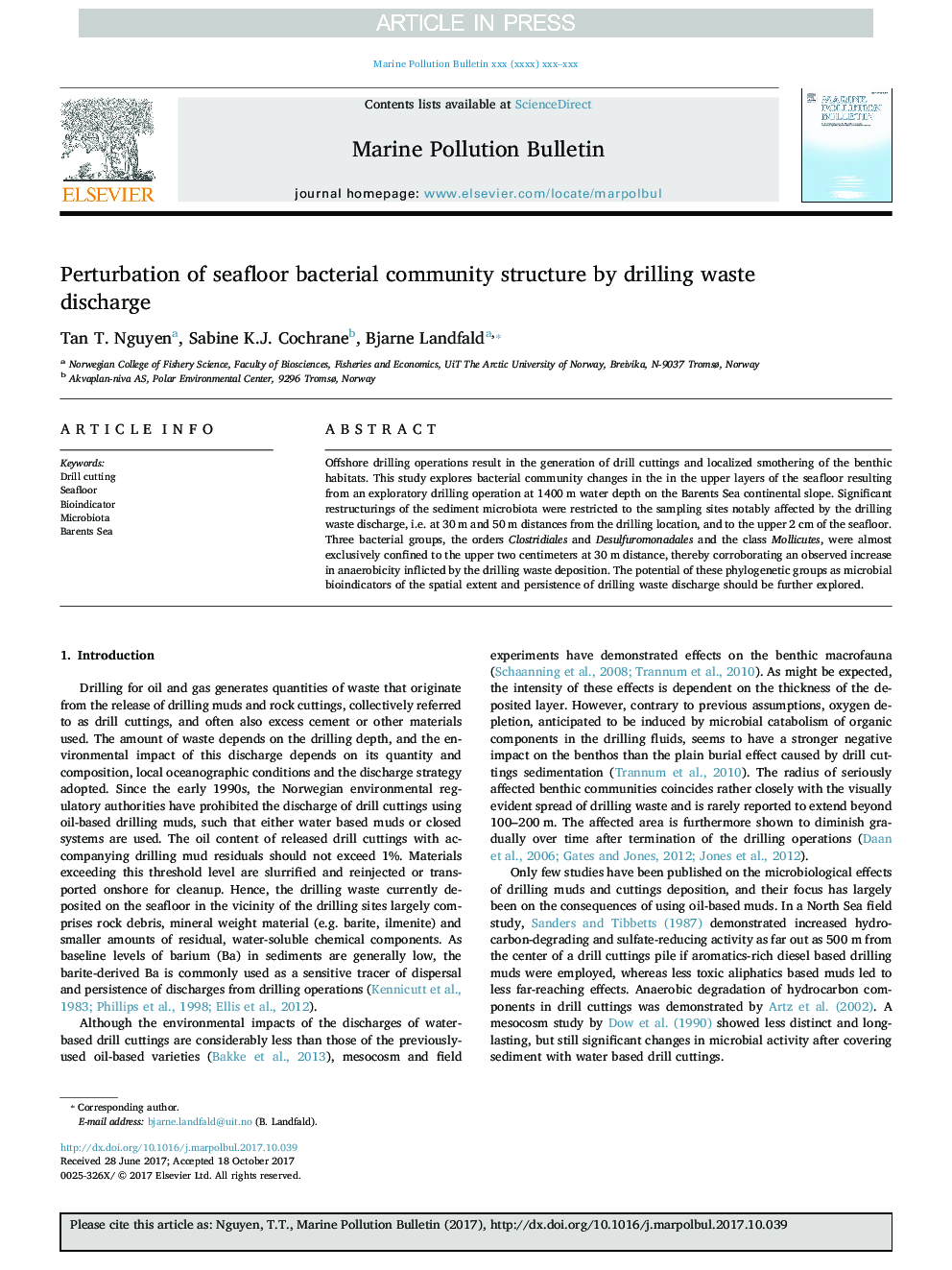| Article ID | Journal | Published Year | Pages | File Type |
|---|---|---|---|---|
| 8871337 | Marine Pollution Bulletin | 2018 | 8 Pages |
Abstract
Offshore drilling operations result in the generation of drill cuttings and localized smothering of the benthic habitats. This study explores bacterial community changes in the in the upper layers of the seafloor resulting from an exploratory drilling operation at 1400Â m water depth on the Barents Sea continental slope. Significant restructurings of the sediment microbiota were restricted to the sampling sites notably affected by the drilling waste discharge, i.e. at 30Â m and 50Â m distances from the drilling location, and to the upper 2Â cm of the seafloor. Three bacterial groups, the orders Clostridiales and Desulfuromonadales and the class Mollicutes, were almost exclusively confined to the upper two centimeters at 30Â m distance, thereby corroborating an observed increase in anaerobicity inflicted by the drilling waste deposition. The potential of these phylogenetic groups as microbial bioindicators of the spatial extent and persistence of drilling waste discharge should be further explored.
Related Topics
Physical Sciences and Engineering
Earth and Planetary Sciences
Oceanography
Authors
Tan T. Nguyen, Sabine K.J. Cochrane, Bjarne Landfald,
